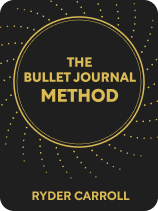

This article is an excerpt from the Shortform book guide to "The Bullet Journal Method" by Ryder Carroll. Shortform has the world's best summaries and analyses of books you should be reading.
Like this article? Sign up for a free trial here .
Do you hold yourself to unrealistic expectations? Do you beat yourself up when you can’t reach your goals?
To combat self-loathing, you must embrace your imperfections. One method to do that is through Bullet Journaling. Bullet Journaling can help you reflect on the progress you’ve made and to set new, realistic goals for self-improvement.
Here’s how Bullet Journaling can help you embrace your imperfections.
Embracing Imperfection
Carroll says that a final hurdle to living our best lives is our focus on perfection. He argues that it’s only when you embrace your imperfections and focus on continual improvement that you’ll see a change in the quality of your life. Specifically, instead of striving to reach perfection, we should see ourselves as students in the process of learning and free to make mistakes.
(Shortform note: Although Carroll argues that embracing imperfection will improve the quality of your life, he doesn’t provide specific examples of how it will help you. According to mental health experts, embracing imperfection leads to higher resilience to failure, increased self-esteem, less judgment of others, improved emotional well-being, and healthier relationships.)
Despite recognizing the impossibility of perfection, we still hold ourselves to unrealistic expectations in many aspects of our lives, like in our health, relationships, or goals. What’s more, we tend to see perfection in terms of all or nothing—either we’re perfect or a failure, with nothing in between.
(Shortform note: Why do so many people fall prey to perfectionism? While unrealistic expectations may be to blame, there’s more to the story. Psychologists say that society’s increase in social media use, as well as greater academic and professional competition, have caused a spike in perfectionistic tendencies over the last 30 years.)
What’s more, Carroll argues, in trying to achieve perfection, we end up sabotaging our potential. When we don’t meet our impossibly high standards, we experience self-loathing, abandon our plans, and return to old, counterproductive behaviors.
(Shortform note: While high standards of perfection may be self-sabotaging as Carroll states, some argue that raising our standards to a reasonable degree is necessary to achieve our goals. By having higher expectations for ourselves, we raise our level of performance to meet them, and better performance naturally leads to greater achievement.)
The Bullet Journal Solution
Carroll recommends two primary ways to change your mindset and avoid perfectionism. First, use your daily, monthly, and yearly reviews to track your progress by noting what you’ve accomplished and learned as well as how you can improve moving forward. (For example, maybe you managed to read two books last month, but this month you’d like to aim for five.) Then, record new goals and tasks based on your reflection.
(Shortform note: Carroll suggests that we can combat feelings of self-loathing by focusing on progress rather than perfection. However, this strategy places exclusive focus on our actions and sends the message that our worth comes solely from our achievements. As a more self-accepting alternative, Brené Brown, author of The Gifts of Imperfection, recommends overcoming perfectionism by practicing self-compassion and changing the way we respond to feelings of shame and judgment. With this strategy, we can embrace imperfection regardless of what we do or don’t accomplish.)
Additionally, Carroll suggests that you create a customized section in your journal that focuses on imperfection and acts as a space where you can let go and focus on the present moment. While you can use the space however you want, he recommends focusing on activities that will make your notebook feel flawed: Draw with your eyes closed, write with a different pencil grip, or scribble random shapes and designs.
(Shortform note: While Carroll’s suggestion could be useful for the average person, those who struggle deeply with perfectionism would likely have a hard time getting started because of their stubborn resistance to flaws. Because of this, they may benefit from something like the Wreck This Journal series, which encourages creativity and mess-making through a series of guiding prompts that ask journalers to poke holes, color outside the lines, and even deface photos.)

———End of Preview———
Like what you just read? Read the rest of the world's best book summary and analysis of Ryder Carroll's "The Bullet Journal Method" at Shortform .
Here's what you'll find in our full The Bullet Journal Method summary :
- A comprehensive guide to using the Bullet Journal Method
- How to maintain a journaling practice that can improve your overall quality of life
- How to extend the method beyond productivity to a practice in mindfulness






